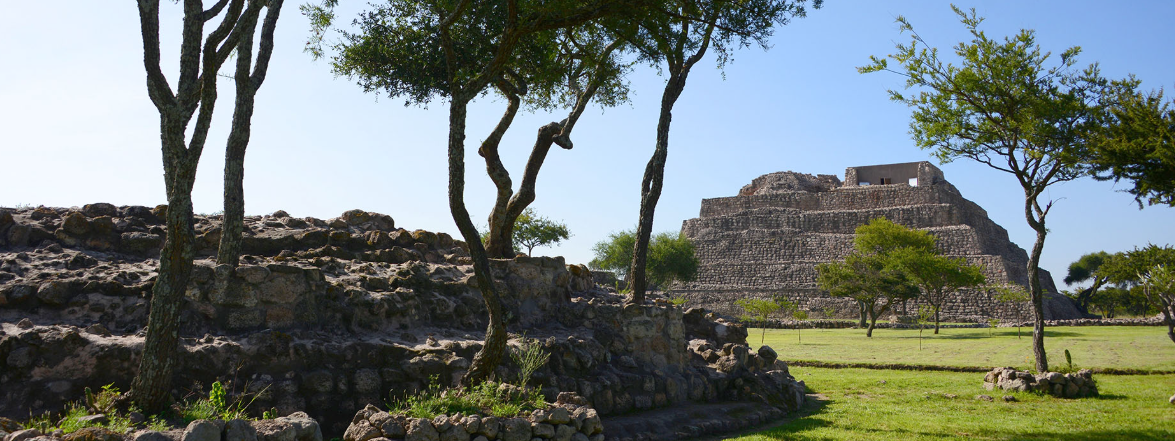Cañada de la Virgen
A startlingly clear indication that the ancient Otomi people here watched the sky and wondered at our place in the universe, even hundreds of years later it remains remarkable.

The Cañada de la Virgen archaeological site is an important excavation of an Otomi city on the north central border of ancient Mesoamerica. The site is often visited from San Miguel de Allende, easily the most visited place in this part of Guanajuato. The site is one of the most important for telling the history of the Otomí-Hñahñu peoples who have called these parts of Central Mexico home for centuries.
Construction of the city here is believed to have begun after the collapse of the Teotihuacan culture. Some Otomi peoples certainly lived there, and are believed to have relocated here in about 530 CE.
The site is divided into three main complexes, A, B, and D. A is the House of the Thirteen Heavens. The big, 16-meter pyramid, served as a point for astronomical observation. The courtyard, filled with water during the rainy season, reflected the sky. The nearby Red Temple, the largest in Mesoamerica, was adorned with murals.
Complex B is today called the House of the Longest Night. The design reflects its connection to the winter solstice and an attached water conveyance system, and rooms with fireplaces reveal something of the daily life of the ancient people. Complex D is today the House of the Wind. Circular in design, a temple on top make it nearly unique on the landscape and surprising place to find yourself.
Like in San Miguel, the air and the quality of light here are extraordinary. To miss the Cañada de la Virgen site is to miss an opportunity to really understand the long history of San Miguel prior to the European colonization.
La Cañada de la Virgen site is just about one hour west of San Miguel. Many tour operators around the center of the city will ferry visitors for what is usually about a six-hour adventure. Visitors are often surprised simply by the quality and scale of the pyramids here.